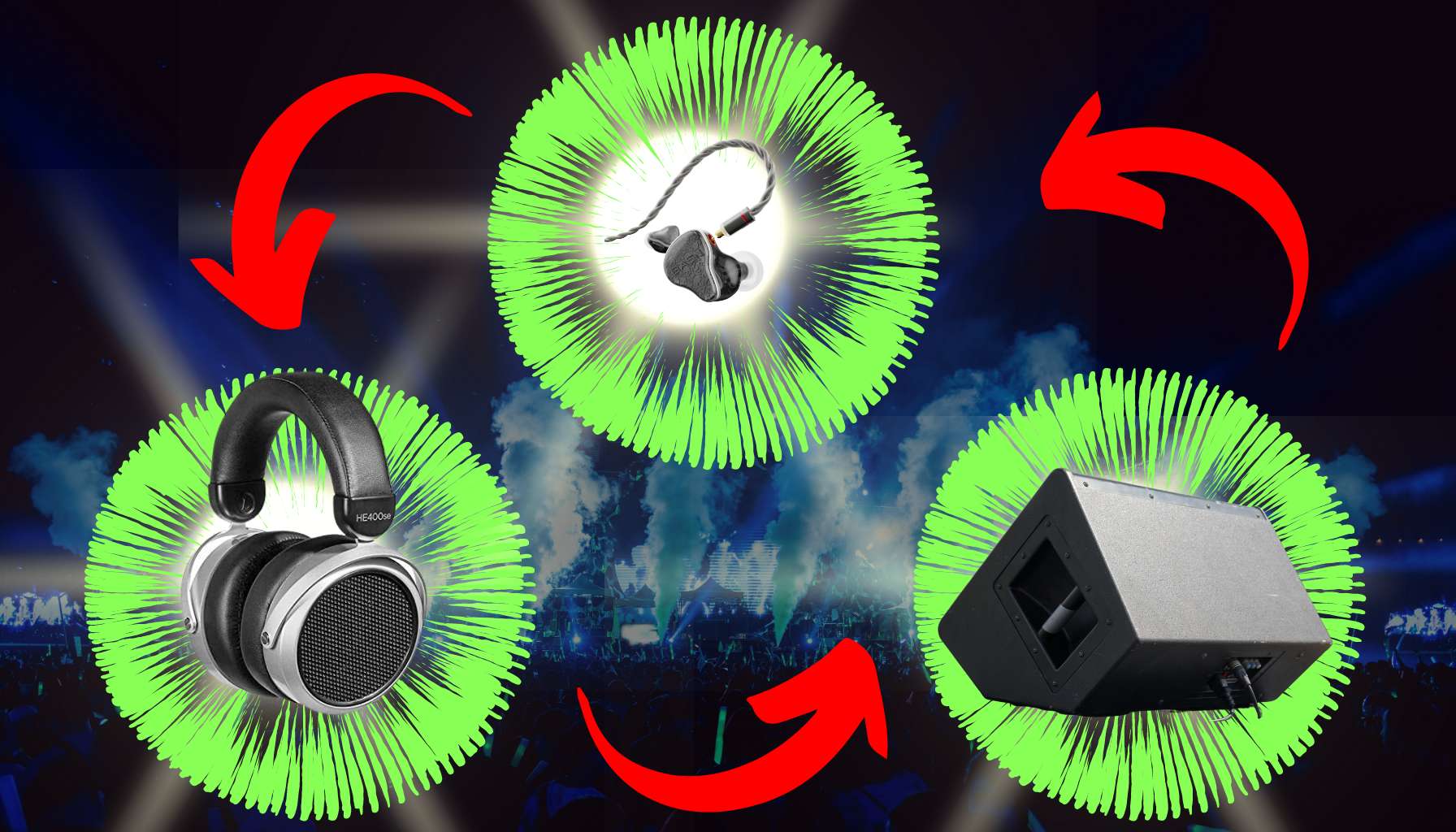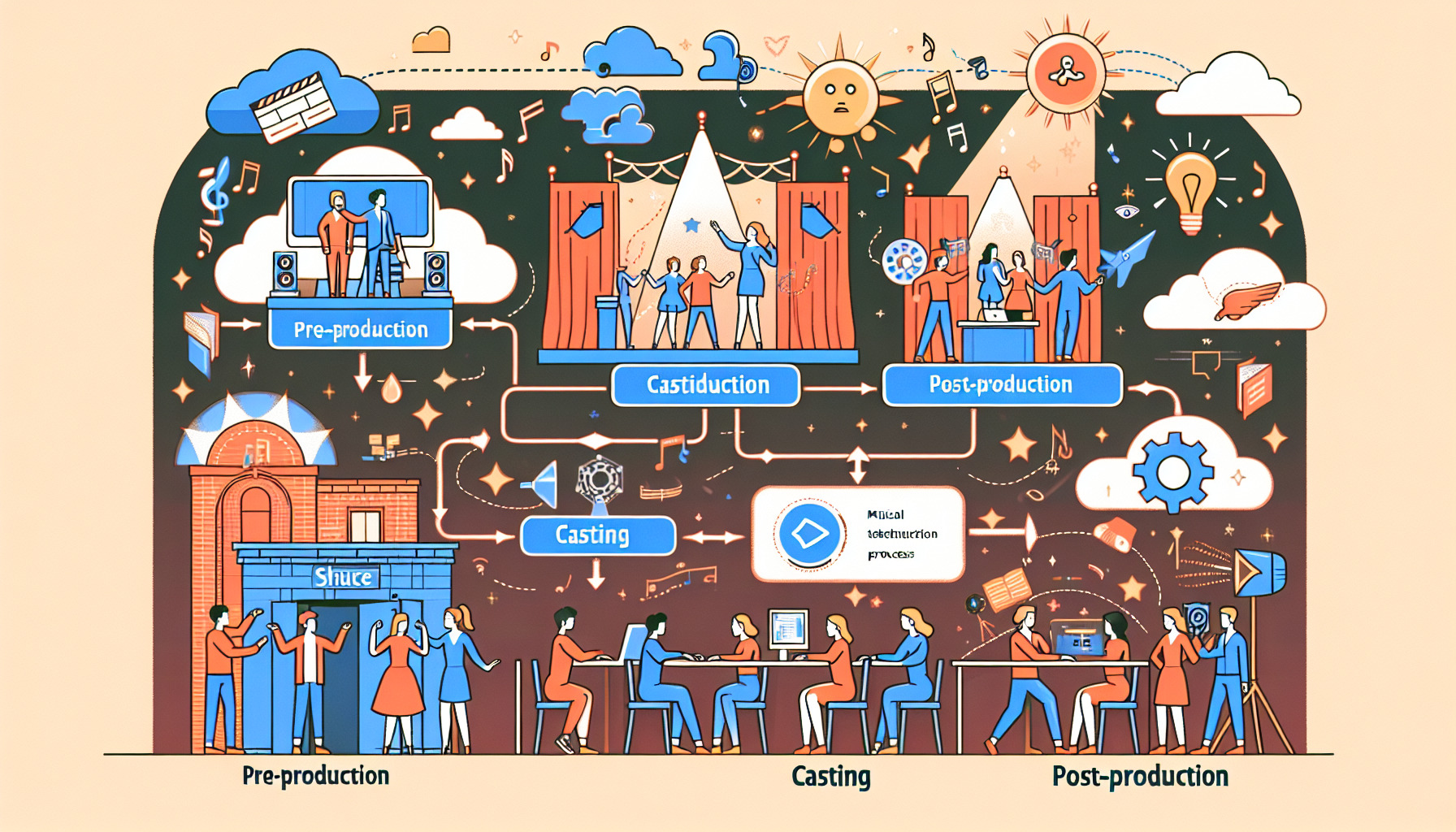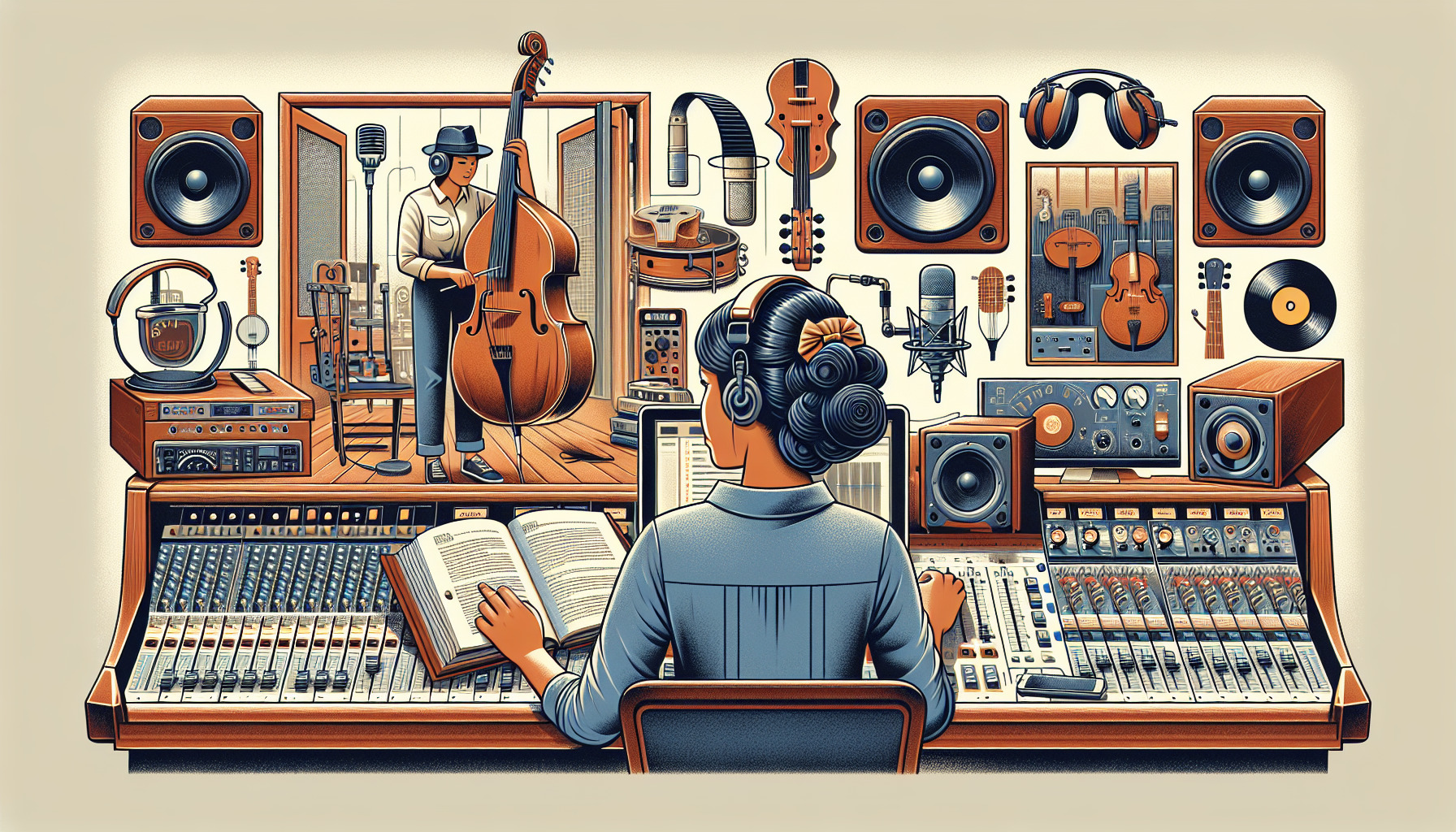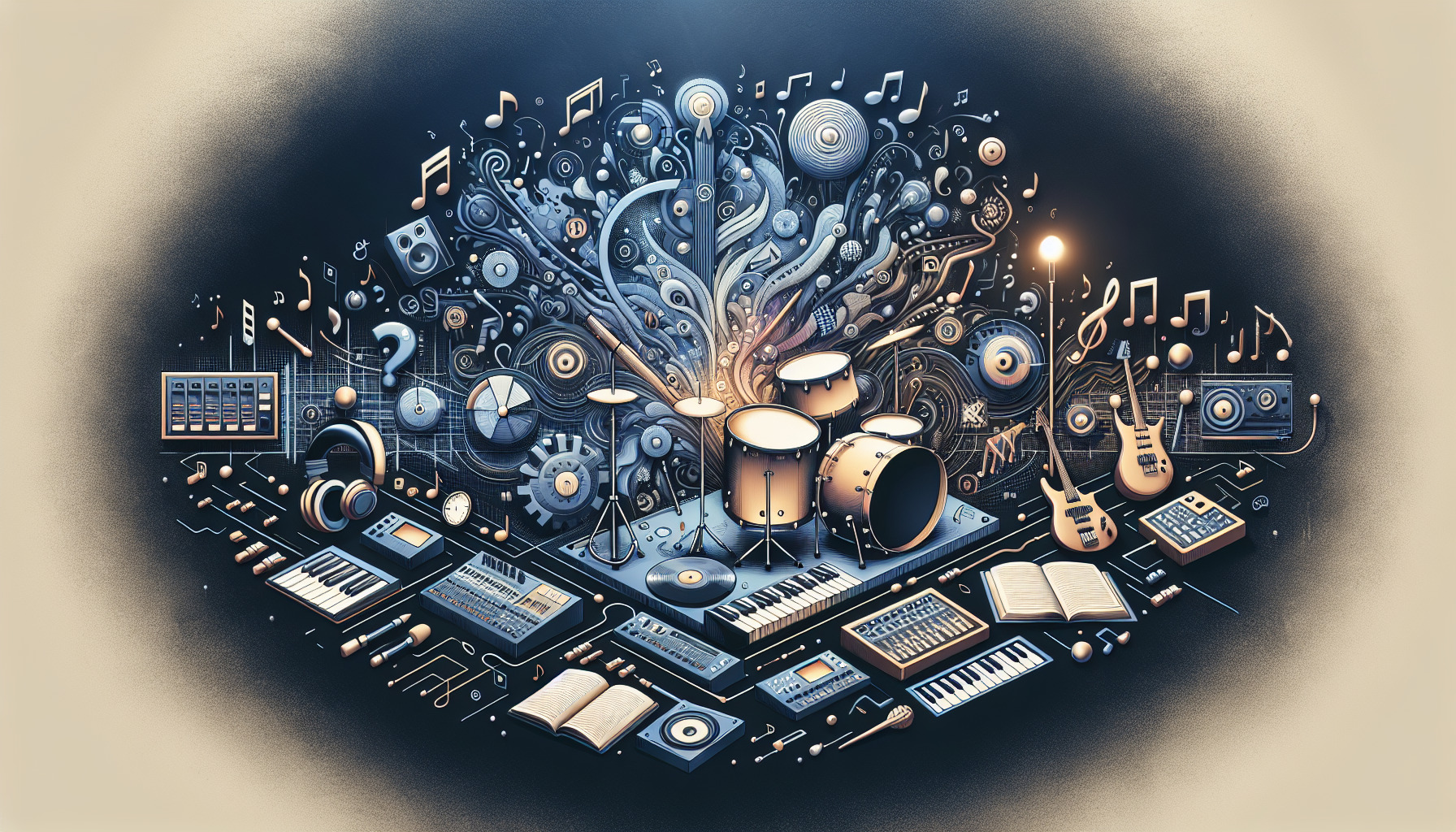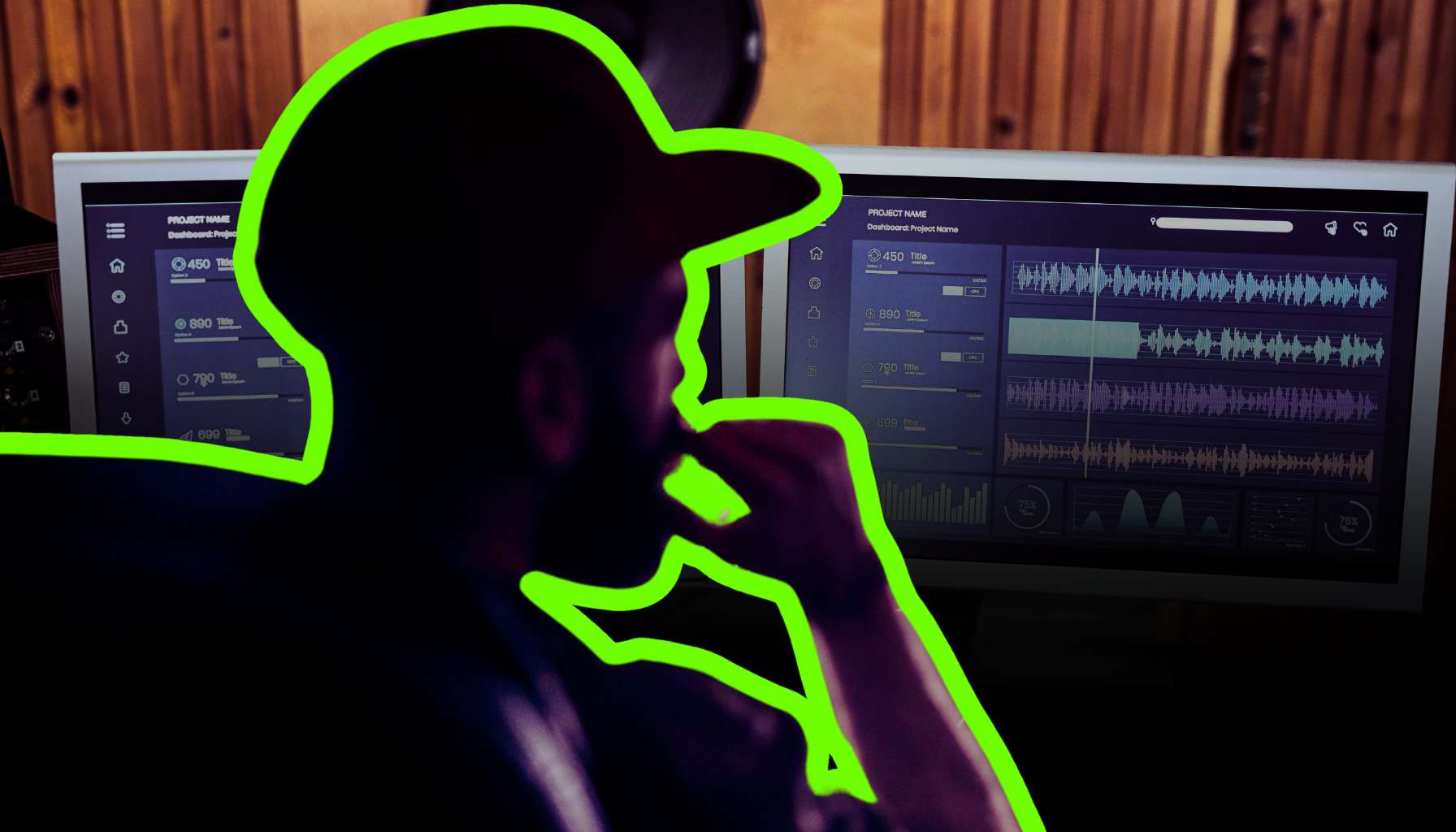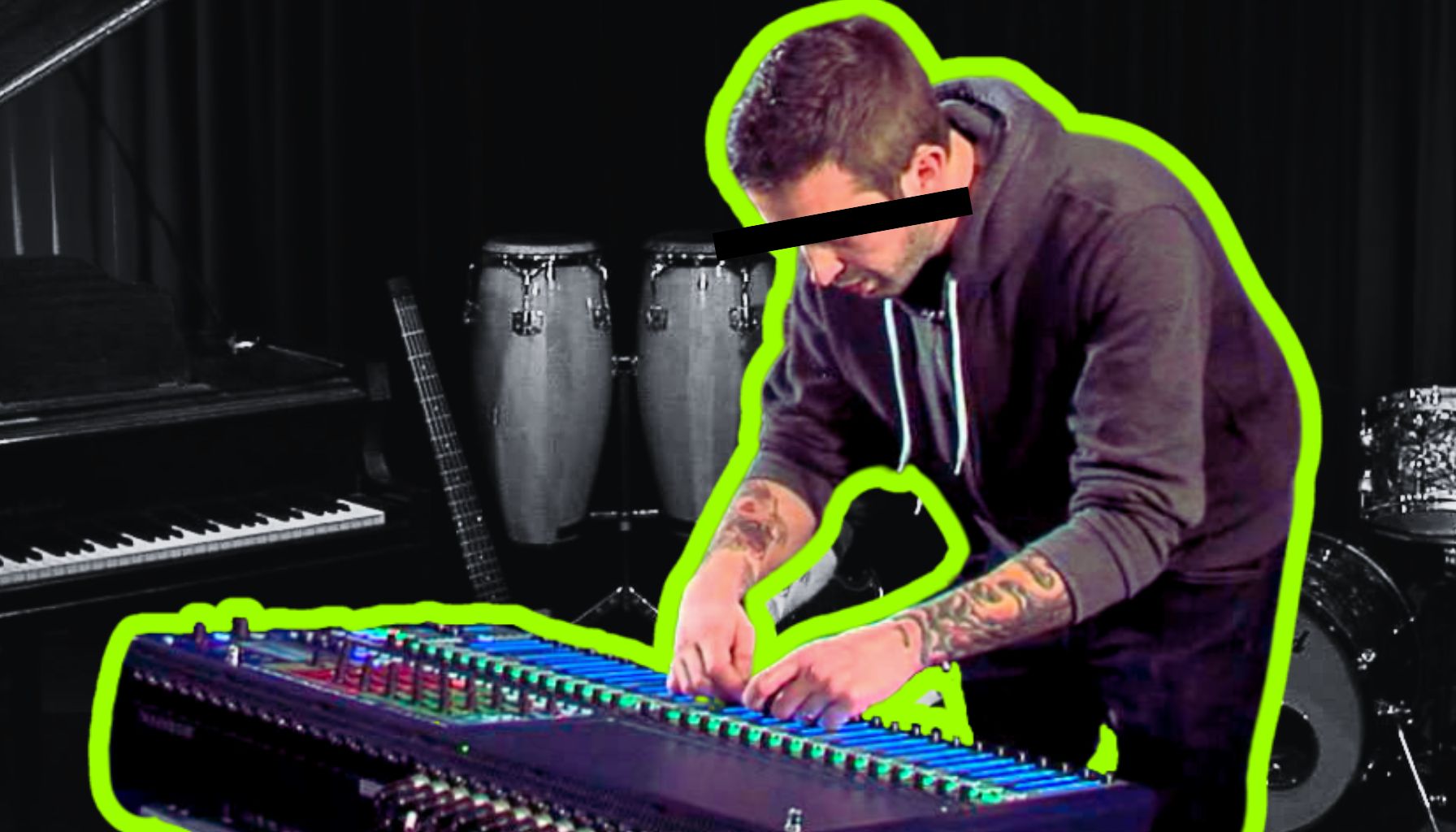Introduction to Ambient Music Production
Defining Ambient Music
Let’s start our sonic journey with an enigmatic question that has mystified even the most seasoned producers – “What exactly defines the essence of ambient music?” At its core, ambient music is the art of atmosphere, a musical painting that immerses you in an auditory experience as vast as the Sistine Chapel’s ceiling. From the early experimental soundscapes carved out by Brian Eno to the contemporary textures that swathe the modern soundscape, ambient music has always been about creating a mood – a sonic space where the listener’s imagination can roam free.
Historical Evolution of Ambient Music
Tracing the veins of ambient’s history reveals a heartbeat that pulses with innovation and transformation. Ambient started as a rebel with a cause – to counterpoint the structured and melodically-driven juggernaut that was the music industry standard. It has since evolved into a genre that transcends boundaries, incorporating elements of minimalism, electronic, and even classical music. Its evolution is marked by an increasing sophistication in texture and timbre, a testament to the advancements in sound generation and manipulation technologies.
Role of Texture and Timbre in Ambient Soundscapes
In the realm of ambient music, texture is king. It’s the delicate weaves and the bold strokes that create the tapestry of sound that defines a track. But it’s the timbre, the quality and color of sounds, that elevates a mere compilation of noises into an evocative auditory narrative. It’s what transmutes chords into clouds or synth warbles into waterfalls – it’s the hidden brushstroke that turns sound into emotion.
Basic Equipment and Software Requirements
Embarking on the creation of ambient music can be daunting, but remember – in this genre, your tools do not define you. Your imagination does.
Choosing the Right Digital Audio Workstation (DAW)
Your DAW is your canvas, lab, and sanctuary all wrapped into one. Whether you go for the industry stalwarts like Ableton Live, the surgical precision of Logic Pro, or the free-flowing creativity of FL Studio, select a DAW that feels like the extension of your creative mind. It needs to be user-friendly enough to keep the technicalities from bogging down your inspiration but also potent enough to bring your aural dreamscape from ethereal idea to earthbound entity.
Essential Plugins and Sound Libraries for Ambient Textures
In ambient production, plugins and sound libraries are the palette from which you’ll draw your myriad colours. Investing in a set that includes high-quality reverbs, delays, and texture-specific synthesizers can offer you a nearly limitless sonic sandbox. But don’t be seduced into thinking you need to break the bank – sometimes the most otherworldly textures come from the manipulation of simple, free samples and effects. As we drift from the introspective calm of defining ambient music, we prepare to delve deeper into the practicalities
Moving into the next phase, we will explore how you can mold the ethereal clay of sound to create atmospheric textures that resonate with depth and authenticity. From layering pads and drones to the subtle art of evolving textures over time, the ambient architect must be adept at both the scientific and the poetic – a master of technology and a maestro of emotion. Consider this section the first step into your ambient studio, a space where minimalistic beauty meets sonic complexity, creating sounds that softly whisper the secrets of the universe.
Creating Atmospheric Textures
Imagine a canvas where sound is your paint and silence is your backdrop. Crafting the atmospheric textures central to ambient music is less about the bravado of bold strokes and more about the subtlety of shading and depth. After picking out the perfect DAW and stocking up on essential plugins—discussed in the previous section—you’re now ready to weave the sonic tapestry that defines your ambient masterpiece.
Developing Rich Soundscapes
Layering Pads and Drones
To start building your ambient edifice, begin with pads and drones. These continuous, textural sounds are the kings and queens of the ambient realm. Employ layering to give your track a multi-dimensional feel; think of warm, sonic blankets slowly wrapping around your listener. Experiment with slowly evolving your layers—each with its filter, panning, and volume automation—to create a living, breathing organism of sound that’s ever-shifting, never stagnant.
Techniques for Evolving Textures Over Time
As time in ambient music is a leisurely river rather than a raging torrent, introducing subtle changes over lifetimes—well, minutes—keeps the ear intrigued. Automate modulation parameters or employ movement-generating effects like phasers or slowly oscillating delays. The result? A soundscape that reveals new layers and whispers different secrets into the ears of those patient enough to listen.
Manipulating Field Recordings and Found Sounds
Capturing Organic Textures
Beyond the synthesizers and samples, the world around you teems with untapped sonic potential. Field recordings infuse your track with a sense of place that is uniquely yours. Grab a portable recorder and capture the symphony of the city’s bustle or the tranquility of the forest. These sounds not only ground your piece in reality but give it a touch of personal flair.
Processing Techniques for Adding Depth and Space
Once you’ve got your sonic gold, processing these nuggets is where you can truly strike it rich. A sprinkle of reverb, a touch of delay, some pitch shifting, or a twist of a filter; treat each sound like a fine spice, enhancing the overall palate. But always remember, when it comes to ambient, less is more—a light brush can give your piece the wings it needs. With these tips, your ambient production should be swelling with lush, expansive textures, ready to spirit your listeners away to otherworldly realms.
Just as you’ve carefully nurtured the atmospheric quality in your music, the next step is to infuse this audible aura with life and character, turning your attention to the timbral possibilities and their synthesis. As we gracefully segue into exploring the realm of timbre and synthesis, remember that the journey of ambient production is one of exploration and emotion. The sonic beauty lies in defeaturing the rigid structures in favor of letting the textures themselves narrate the story—one that’s about to be enriched in the upcoming section focused on the synthesis and the nuanced art of sound design.
Exploring Timbral Possibilities
Have you ever found yourself in an aural labyrinth, wandering through the corridors of sound, fabulously lost in the myriad pathways of ambient textures and timbres? Such is the journey through the serendipitous world of Ambient Music Production, where the act of crafting unique patches and blending acoustic timbres becomes as enchanting as the music itself.
Synthesis and Sound Design for Ambient Music
Moving from the tangible threads of atmospheric textures, our expedition brings us to the world of synthesis, a vital bedrock for the ambient architect. In this domain, the traditional subtractive synthesis meets the arcane realms of granular and wavetable synthesis, each a fountainhead of sonic possibilities. It’s here that synthesis techniques crown you the master of frequencies, allowing you to sculpt soundscapes brimming with life and evolving them over time like a painter with an infinite palette. And as for crafting those unique patches? Imagine wooing sounds through modulation and effects as one might coax a genie from its bottle. It’s the deft touch of an LFO here, a sprinkle of a resonant filter sweep there, perhaps a pinch of tasteful distortion – each movement and adjustment a deliberate stroke on the canvas of creation.
Leveraging Acoustic Instruments in Ambient Productions
But let’s not forget our old friends—acoustic instruments. Their timbres harbor the soul’s whisper, offering a warmth that can’t be emulated by their electronic counterparts. Integrating these sounds into your ambient production isn’t just about plucking strings or capturing chords; it’s an intimate dance of microphone placement and recording ambience. A well-placed mic in a reverberant space can catch the breath of the room, the lingering notes suspended in air, weaving an undercurrent of realism through your track.
Techniques for Microphone Placement and Recording Ambience
The alchemy of microphone placement is a subtle yet powerful tool. The spread of a stereo pair can capture the space of a sound or the intimacy of its source. For the ambient music producer, it’s not merely recording – it’s curating sonic artifacts in their natural habitat. Experimenting with mic setups can turn a mundane pluck or bow into an echoing symphony that serves the almighty texture. As one navigates through the thicket of sound design and synthesis, a bridge forms between the exploration of timbral possibilities and the mystical nature of effects and processing – our next port of call. Reverb and delay hang in the balance, ready to plunge your careful constructions into the depths of space, making way for that ethereal essence of ambient music to truly blossom. One must now prepare to harness these tools to concoct sonorous realms that invite the listener to wander endlessly, encapsulated by a boundless auditory mist. With gentle modulation and deliberate dynamic control, we shall encapsulate the essence of what’s to come – crafting sound that not only fills the ears but resonates within the empty chambers of the spirit, where the magic of ambient truly unfolds.
The Use of Effects and Processing in Ambient Music Production
Fresh from our journey through timbral wilderness, it’s time to dive headlong into the realm of effects and processing—a treasure trove for any ambient music alchemist. After all, what’s the landscape without its enigmatic fog, its shadowy contours? This section will illuminate the path to manipulating the ether of your soundscapes and pull back the curtain to reveal the wizardry of reverb, delay, modulation, and dynamics that give life to the intangible.
Reverb and Delay: Creating the Illusion of Space
Let’s face it, in ambient music production, reverb isn’t just an effect; it’s the air your tracks breathe. It’s the grand illusionist of space, conjuring cathedrals, caverns, and cosmos from the confines of your studio. The key is in selecting the right type of reverb—plate for metallic sheen, spring for that retro vibe, or digital for pristine ethereality. Unconventional settings offer a playground for the sonic explorer.
Extend decay times, experiment with pre-delay, or pitch-shift the reverb tails for panoramas that stretch beyond the mere audible into the experiential. And delay? Think of it as reverb’s echoic sibling, repeating your sounds into infinity with precision or smearing them for a mind-bending soup of auditory deja vu. The magic lies in not just using these tools, but bending them to your will—syncing to your track’s tempo, offsetting left and right channels, or tweaking the feedback for a kaleidoscopic spiral into the sonic abyss.
Modulation and Dynamic Effects
Whereas reverb and delay build the habitat, modulation and dynamic effects are the creatures that roam within it. A chorus can shimmer like sunlight on water, flangers can swirl like a gust through leaves, and phasers can ripple like the surface of a dream. They imbue movement, a breath of life into static soundscapes. And when it comes to control, the dynamics are the unseen hands that sculpt.
Compression isn’t just for pop vocals—it’s the invisible force guiding listeners through your ambient odyssey with intent. Side-chain compression, oft the unsung hero, can make your pads pump with an otherworldly heartbeat or underlay a rhythm to the ghostly whispers of your textures. It’s a genteel dance between elements, ensuring one doesn’t trample the other in their quest for audio clarity. Transitioning from the arcane art of effects, it’s time to craft these celestial clouds of sound into structure—that enigmatic skeleton of your ambient masterpiece. Is it all free-flow, or is there method in the seeming madness?
Enter the world of minimalist arrangements and motifs—the yin to our textural yang. Here, you’ll learn the art of holding back, of weaving silence with sound, and of coaxing thematic threads through your tapestries. Ready to balance stillness and motion in a symphony of subtlety? Let us wade into the serene waters of structuring ambient pieces where the pulse of understated rhythm awaits to accompany our textural ambient voyage.
Structuring Ambient Pieces
When creating ambient music, it’s not just about casting sounds into the void and hoping they form constellations. Composition and structure are the gravitational forces that give your celestial soundscapes shape and meaning. In this space, less is often astronomically more, and each note or silence is as purposeful as a star in the night sky.
Compositional Techniques for Ambient Music
Think of ambient compositions as vast, ethereal landscapes. The key lies in minimalism and restraint; it’s a sonic tapestry woven with the threads of patience and introspection. Delicate motifs and themes should drift in and out like a soft tide, inviting listeners to dive deep into their own reverie. This spacious approach in structure allows the mind to wander—every echo, a thought; each drone, a dream.
Yet, amidst this minimalist approach, there lies an artful dance of development and recurring motifs. Subtle variations can guide the listener along a path that feels familiar, yet never quite the same upon each return. In crafting these motifs, consider not just the melody but also the texture; let the piece evolve organically, blooming into its final form without the unnecessary hurry that hampers experience.
The Role of Rhythm and Percussion in Ambient Music
Rhythm in ambient music? Sacrilege, some might say, but when done right, it’s like the soft patter of rain on a windowsill—rare, but mesmerizing. Percussion, if used, should be the whisper not the shout, the gentle nudge rather than the push. It’s textural enhancement at its finest—the shimmer of a cymbal wash or a muted kick that feels like a pulse within the earth. When it is time to stir the silence with rhythm, it’s all about subtlety.
Avoid the predictable—let the rhythmic elements hum and buzz with life, appearing fleetingly like a heartbeat felt beneath layers of warmth. Each percussive element should only enhance the ambience, not impose upon it. As we wrap this odyssey of ambient construction, we prepare to step into the realm of mastering—the final polish on the gemstone of our creation. With your compositions tenderly nurtured, it’s crucial to remember that mastering for ambient music is not a heavy-handed sledgehammer, but a gentle sculptor’s chisel.
Here, the balance of dynamics and the nuance of the frequency spectrum are paramount. Each piece, lovingly crafted, must translate its narrative not only across different rooms but different souls, and with the right touch in mastering, those silent spaces can echo endlessly.
In essence, the art of ambient music lies in the powerful unfolding of each moment. In a genre where every ripple and wave is felt, the push and pull of dynamics and ambient diversity carry listeners on a voyage through the quiet storms and serene calms of your musical universe. Now, let’s sail forth into the technical subtleties of mastering ambient music, where the texture of sound meets the sheen of a final polish.
Mastering for the Ambient Genre
The final frontier in the world of ambient music production is mastering—the subtle art that takes your carefully woven tapestry of sounds and ensures they translate beautifully across all listening environments. It’s here we cross the t’s and dot the i’s, confirming that your audio odyssey is cosmic in every sense.
Balancing Dynamics and Frequency Spectrum
In mastering ambient music, equilibrium is key. Unlike the heady thumps of a dance track, ambient music hits differently—like the difference between witnessing a supernova and the gentle glow of the aurora borealis. Use a gentle touch with EQ to highlight the lush textures you’ve created without undermining their subtlety. Contemplate the frequency spectrum as you would an endless horizon—expansive and awe-inspiring. Leave room for the echoes in the space you’ve sculpted.
EQ and Stereo Imaging in a Spacious Mix
If ambient tracks are celestial bodies, then stereo imaging is the gravity that holds the auditory universe together. Pan with purpose, giving each element its rightful place in the cosmic dance. Realize that ambiance is not only built upon a horizontal plane; the vertical space we call ‘stereo width’ is just as critical for achieving the expansiveness that listeners expect from a flight through an ambient dreamscape.
Loudness and Export Settings
When it comes to loudness, our goal isn’t to make your tracks shout—it’s to make them whisper with authority. In ambient music, dynamics should have the freedom to breathe, rather than be suffocated by the desire to compete with the loudness of a chainsaw symphony flooding today’s streaming services. And when you’re finally ready to share your creation with the world, remember: lossless is the gold standard for aural clarity.
As your tracks spread out into the world—through esoteric online music forums and high-end audio equipment alike—your attention to detail in the mastering process ensures they will sound intentional and immersive, regardless of where they’re played. Now, armed with these techniques to ensure your ambient pieces flow like watercolor in the rain, we prepare to transition into the more inquisitive minds of the audience.
The upcoming FAQs on Ambient Music Production: Textures and Timbres section will address the recurring curiosities and concerns surfacing among producers, from pinpointing the essence of an ambient sound texture, to fine-tuning the very fabric of your musical environment. It’s a compilation of wisdom solidifying that ambient music is an art form where the only rule is there are no rules—only soundscapes waiting to be explored with patience and passion.
FAQs on Ambient Music Production: Textures and Timbres
Navigating the ethereal landscape of ambient music production can be akin to a spaceman’s first spacewalk—exciting yet slightly overwhelming. The essence of crafting a deep, immersive experience lies in the textures and timbres, which serve as your celestial tools. Fear not, intrepid producer. These FAQs are your spacecraft’s control panel, assisting you in floating through the galaxy of sound design with poise and purpose.
What Makes a Sound Texture Suitable for Ambient Music?
Like the right wine for your meal, the right texture for your ambient track enhances its palate. A texture that evokes the ebb and flow of the ocean or the rustling of autumn leaves can transport listeners to another realm. Textures in ambient music should be rich, evolving, and nearly tactile—characteristics that can be attained by layering sounds and employing meticulous processing techniques—ensuring each note is not just heard but felt.
How Can I Achieve Movement in My Ambient Tracks Without Disrupting the Calm?
In this musical zen garden, movement comes from the gentle breeze of modulation effects and panning—not the hurricane of overpowering rhythms. It’s about subtlety: a slow phaser, a hint of tremolo, and the call and response of echoing delays can create a sense of motion and life that doesn’t disturb the peace, but rather enhances it.
What Are Some Recommended VST Instruments for Creating Ambient Textures?
A painter needs their brushes, and an ambient architect, their VSTs. Tools like Omnisphere, Absynth, and Alchemy are lauded for their rich libraries and expansive sound design capabilities, offering a universe of sonic possibilities that can be tailored dynamically to any ambient endeavor.
How Can I Record High-Quality Field Recordings for My Ambient Projects?
The mantra here is ‘garbage in, garbage out.’ Therefore, equip yourself with a reliable field recorder and adopt a ninja’s stealth. Patience is your virtue in capturing the unblemished sounds of nature. Remember, even the subtle swish of a leaf or the distant toll of a bell, when recorded cleanly, can become the cornerstone of an ambient masterpiece.
In Ambient Music, Is It Better to Record Live Instruments or Use Samples?
While samples can be manipulated for convenience, the raw, emotional input from a live instrument is irreplaceable. It’s the difference between using a stencil and freehand drawing—the latter always has the potential for authentic stroke of genius. Blend both for a balanced approach, allowing for texture diversity that resonates on a more human level.
Can Ambient Music Include Elements from Other Genres, or Should It Remain Pure?
Purity in music is a myth; genres are playgrounds of sound, not prisons. Infusing elements from jazz, classical, or even rock can reinvent the ambient genre’s perception, much like how a new spice might redefine the taste of a traditional dish. Cross-pollination of styles can birth soundscapes of refreshing originality.
How Much Reverb Is Too Much When Producing Ambient Music?
In the quest to fill out the sonic space, one can drown in the depths of reverb. The key is to give each element its own dimension without turning your mix into a cavernous void. Apply reverb responsibly—let it highlight, not hijack, your sonic vision.
What Are Some Techniques to Avoid a Cluttered Mix in Ambient Music?
As a chef keen on avoiding a muddied bouillon, be judicial with your sonic ingredients. Apply EQ surgically to carve spaces for each element. Exploit the stereo field to position sounds artfully and rely on dynamics to give each layer breathing room. Remember, in ambient music, less is often infinitely more.
How Does the Mastering Process for Ambient Music Differ from Other Genres?
Mastering ambient music is like fine-tuning a hologram—it’s about maintaining the illusion with a gentle touch. Preserve dynamic range and craft a broad stereo image to keep listeners enveloped in your creation. A delicate approach ensures the intimacy and vastness of ambient music are conveyed in their truest form.
Is It Possible to Create Engaging Ambient Music with Minimal Equipment?
Definitely. Some of the most evocative ambient pieces have been born from minimalist setups, proving that inspiration and ingenuity triumph over toolkits. With a basic DAW, some creativity in sound sculpting, and a deep understanding of space and texture, you can give life to ambient tracks that fully immerse and transport the listener. Having explored these critical tips and common queries surrounding ambient music production, your foundation is laid, and you are primed to transform your newfound knowledge into aural voyages. As we set our sights beyond the textures and timbres, let’s segue into understanding the artistic nuances of mastering in the ambient genre—where the subtleties of sound form the pillars of immersive sonic temples that stand the test of time.


